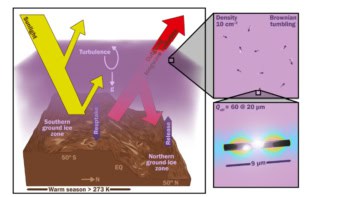
Microbes are moving carbon from the soil to the atmosphere 1.2% more than they did some 25 years ago. That’s according to observations from hundreds of sites around the globe.
“Soils around the globe are responding to a warming climate, which in turn can convert more carbon into carbon dioxide which enters the atmosphere,” says Ben Bond-Lamberty of the Joint Global Change Research Institute, US. “Depending on how other components of the carbon cycle might respond due to climate warming, these soil changes can potentially contribute to even higher temperatures due to a feedback loop.”
Worldwide, soils hold about twice as much carbon as the atmosphere. Plant roots, as well as microbes, contribute to soil respiration. It’s well known that soil respiration increases as temperatures rise; this study aimed to compare the roles of increased plant growth and microbial action. From 1990 to 2014 the proportion of soil respiration due to microbes and other heterotrophs – organisms that don’t photosynthesise – increased from 54% to 63%.
“We know with high precision that global temperatures have risen,” said Bond-Lamberty. “We’d expect that to stimulate microbes to be more active. And that is precisely what we’ve detected. Land is thought to be a robust sink of carbon overall, but with rising soil respiration rates, you won’t have an intact land carbon sink forever.”
Bond-Lamberty, Bailey and colleagues used the Global Soil Respiration Database, FLUXNET for information on factors such as temperature and rainfall, and satellite observations.
“Most studies that address this question look at one individual site which we understand very well,” says Vanessa Bailey. “This study asks the question on a global scale. We’re talking about a huge quantity of carbon. Microbes exert an outsize influence on the world that is very hard to measure on such a large scale.”
“It’s important to note that this is a finding based on observations in the real world,” adds Bond-Lamberty. “This is not a tightly controlled lab experiment.”
The team published the results in Nature.
- This article is based on a press release from Pacific Northwest National Laboratory.



